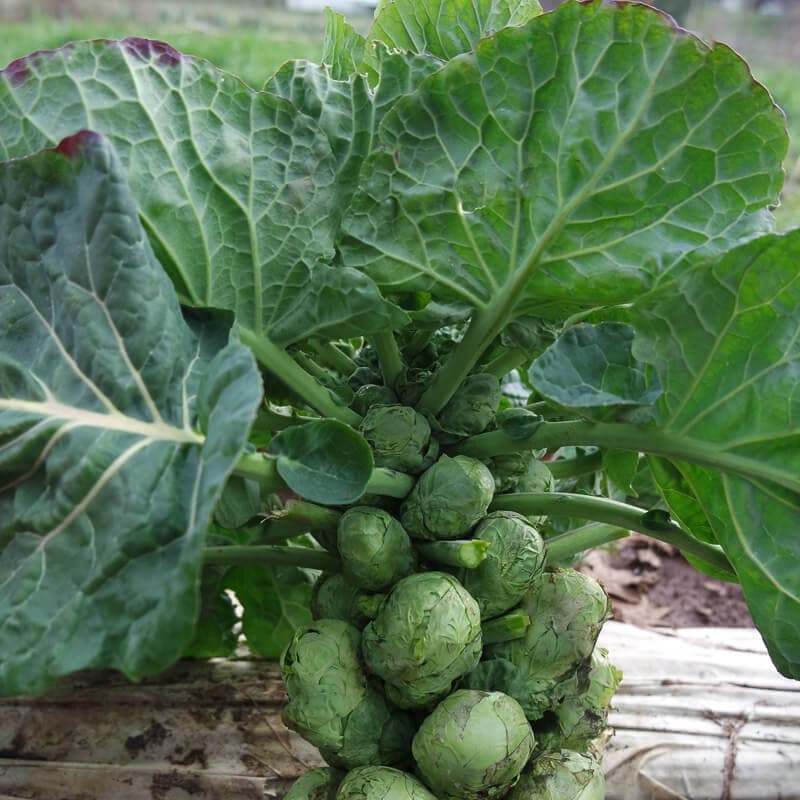
Alternatively, if all the sprouts on a stalk are ready, the whole stalk can be lifted and hung upside down in a cool and dry area (like a shed). Picking from the bottom of the plant encourages the sprouts further up the stem to mature. It is recommended to dig up the whole plant at the end of the growing season and, rather than throw on the compost heap, burn or dispose of the whole plant. This helps to prevent the build up of diseases that attack the brassica family. It is a good idea to grow all brassicas together (eg kale, cabbage, broccoli, sprouts) and rotate their position each year. The plants should be regularly watered throughout the summer months to keep the soil moist. The leaves of brussel sprout plants are subject to being eaten and need to be covered with a net, a tight mesh such as butterfly netting is ideal.

Planting the seedlings through biodegradable fabric will keep weeding to a minimum, and help reduce the need to water in a hot summer.

Sprouts are slow growing, so many gardeners start the plants in a seed bed or cold frame before transplanting them to their final growing positions when they have a few true leaves. I prefer to wait until warmer weather in April and grow sprouts to be ready for mid winter, and especially for Christmas dinner. Early sprouts should be started this way for a harvest from September onwards.

If you have a cold frame, or growhouse, you can sow sprouts in seed trays during early spring weather.


 0 kommentar(er)
0 kommentar(er)
